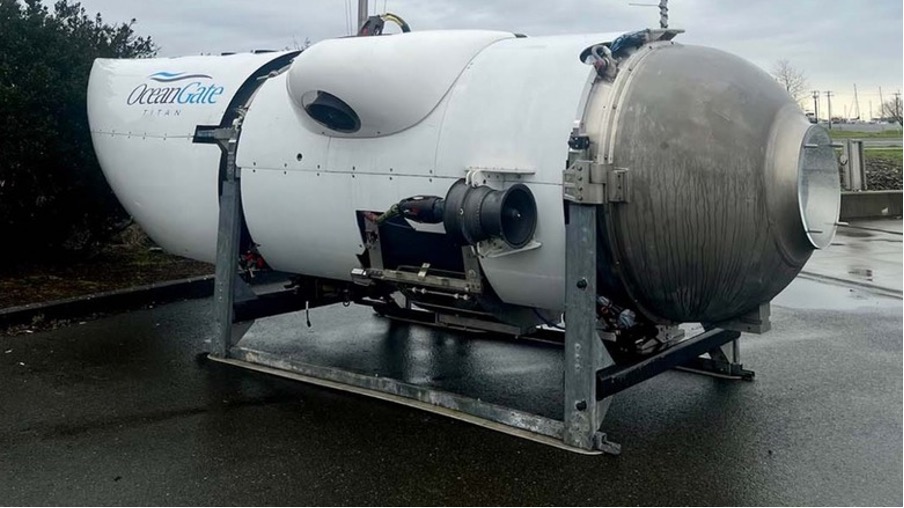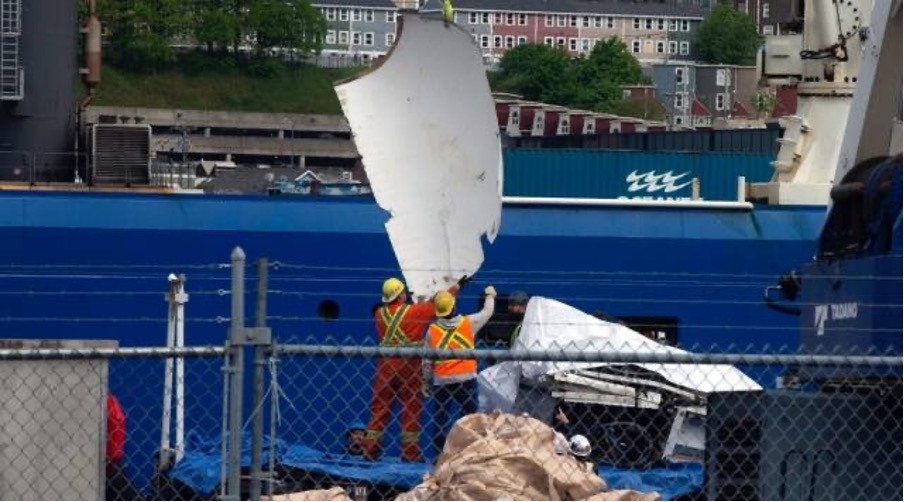More than a century ago, on 15 April 1912, the largest ocean liner at that time, named Titanic, sank in the North Atlantic Ocean. It was the fourth day of her maiden voyage from Southampton to New York City. Now, more than a 100 years later, a submersible named the ‘Titan’, which had set off on a tourist expedition on 18 June 2023 to see the wreckage of the Titanic, has met a similar fate.

What is the Titan?
The Titan was constructed and operated by Oceangate Expeditions, an American tourism and expeditions company. According to the company’s website, it was 22 feet long and weighed 23000 pounds. Passengers, namely, Stockton Rush, the CEO of OceanGate; Paul-Henri Nargeolet, a French deep-sea explorer and Titanic expert; Hamish Harding, a British businessman; Shahzada Dawood, a Pakistani-British businessman and his son Suleman Dawood, set sail from St. John’s, on the eastern tip of Canada’s Newfoundland island, and travelled aboard a larger vessel for two days (Unlike a submarine, a submersible must be supported by a surface vessel and a shore team or sometimes a larger submarine) until they reached the site of the wreck. At that point, they entered the submersible to go down to see the wreckage at a depth of 12,500 feet which was supposed to be a two hour journey. But The Titan lost contact with its mother ship, the Polar Prince, 1 hour and 45 minutes into its dive around 10:45 am. At 5:40 p.m., nearly eight hours after the last communication, the U.S. Coast Guard was notified that the vessel had still not resurfaced which set off an intense international search and rescue.
According to CBS News correspondent David Pogue, who travelled on the Titan last year, the submersible had “about as much room as a minivan.” Passengers had to take their shoes off before entering, he said. Then the crew used 17 bolts to seal the hatch from the outside: “There’s no other way out.”

What was the outcome of the search operations?
For days, information about the submersible and its passengers was a mystery and rescuers from both US and Canada were facing tremendous obstacles, especially the bad weather. The US Navy said it detected sounds “consistent with an implosion” shortly after the submersible lost contact at 3,800m (12,467ft) below sea level. This was a speculation until debris from the Titan was brought ashore in St. John’s, Newfoundland on 28 June with the help of ROVs (remote operated vehicles) and the US Coast Guard speculated it to be a case of a “catastrophic implosion”. Coast Guard Chief Capt. Jason Neubauer has stated that the “presumed human remains” from the debris will be brought to medical professionals in the United States for a formal analysis. The details of the implosion and its cause has not been declared yet. The debris is said to have been discovered just 488 metres away from the Titanic wreckage and all the passengers have been declared dead.

What is a Catastrophic Implosion?
A submarine implosion is much like crushing a can of soda in your hand. It happens when the vessel goes beyond its stipulated limit of dive depth. At depths over 800 feet, the pressure experienced underwater becomes 80 times the atmospheric pressure at the surface and this can exceed the strength of the submarine’s hull leading it to implode. At extreme depths, an implosion is a very swift affair and Maria Marty, a former Naval officer stated in an interview to CNN, “The entire thing would have collapsed before the individuals inside would even realize that there was a problem”. An immediate cause for a submarine implosion can be a crack in the hull or the inability of the material it is built out of to face underwater pressure. For example- we can easily crush a cold drink can made of tin with our bare hands but we won’t be able to crush a can made out of iron that easily.
Who should be blamed?
Although investigations are still underway, it has long been speculated by experts that the Titan wasn’t fit for such extreme depths at sea. OceanGate’s director of marine operations, David Lochridge, started working on a report back in January 2018 when the Titan had been built and was drawing up plans to take opulent passengers on an expedition to witness the Titanic wreck, ultimately producing a coruscating document in which he said the craft needed more testing and stressed “the potential dangers to passengers of the Titan as the submersible reached extreme depths.”

A few months later, the late CEO of Oceangate, Stockton Rush, received a letter on behalf of the members of the Marine Technology Society, a 60-year-old industry group that promotes, studies and teaches the public about ocean technology, which clearly stated- “the current experimental approach adopted by Oceangate could result in negative outcomes (from minor to catastrophic) that would have serious consequences for everyone in the industry.”
(You can find the letter here: https://int.nyt.com/data/documenttools/marine-technology-society-committee-2018-letter-to-ocean-gate/eddb63615a7b3764/full.pdf)
The critiques were focused primarily on what they felt was Mr. Rush’s refusal to have the Titan inspected and certified by one of the leading agencies that do such work in order to save costs.
It has also been argued that despite the high costs of the Titanic expeditions for $250,000 each, the Titan submersible features some remarkably low-cost, off-the-shelf components, such as a $25 Logitech video game controller used to steer the vessel and the carbon fibre compound its hull was built with. Lochridge also claimed that Titan’s viewport had only been certified to withstand pressure of 1,300 meters of depth. The Titanic wreckage is around 3,800 meters beneath the ocean’s surface.
OceanGate, back in 2019, rebuffed the criticisms levelled at the Titan, asserting that “bringing an outside entity up to speed on every innovation before it is put into real-world testing is anathema to rapid innovation”. In an interview with David Pogue, who was a passenger on OceanGate’s surface “mothership” during one of Titan’s successful earlier Titanic “expeditions”, Rush commented, “You know, at some point, safety just is pure waste. I mean, if you just want to be safe, don’t get out of bed. Don’t get in your car. Don’t do anything. At some point, you’re going to take some risk, and it really is a risk/reward question. I think I can do this just as safely by breaking the rules.” One can only speculate whether these lives could have been saved given the adequate safety procedures were followed by the company.
Written by – Arzoo Kumari
Edited by – Shamonnita Banerjee
